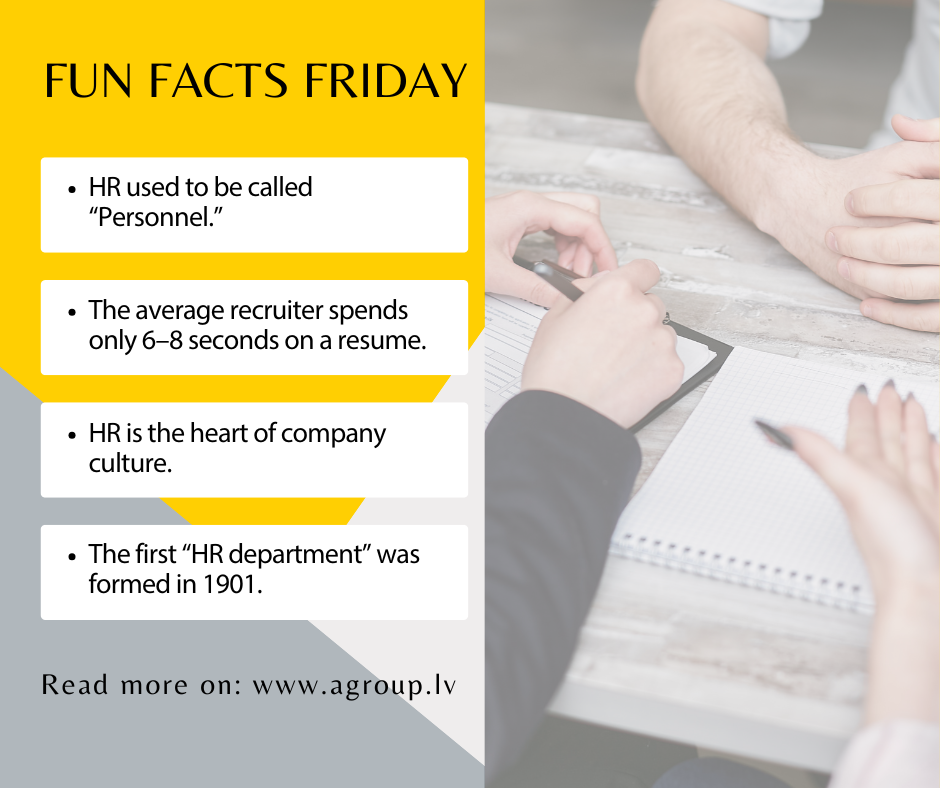HR used to be called “Personnel.”
Before the term “Human Resources” became the norm, HR departments were often known as Personnel Management or simply “Personnel.” These departments mostly handled administrative tasks: employee records, hiring paperwork, time tracking, and enforcing rules. It was largely transactional.
It wasn’t until the 1960s and 70s, during a wave of organizational development theories and changing workforce dynamics, that the term “Human Resources” emerged. The idea was revolutionary: employees weren’t just labour – they were assets, contributors, resources to be developed and supported strategically. This shift aligned with rising interest in employee motivation, engagement, and performance management, and laid the foundation for what HR is today.
The average recruiter spends only 6–8 seconds on a resume.
According to eye-tracking studies on recruiter behaviour, the average recruiter spends just 6 to 8 seconds scanning a resume before deciding whether to continue reading or move on. That’s faster than reading a tweet!
In those few seconds, recruiters typically focus on:
- Job titles
- Company names
- Dates of employment
- Education
- Keywords matching the role
This is why resume design, formatting, and clarity are critical. Even the best experience can be overlooked if it’s buried in clutter or jargon. For job seekers, the takeaway is clear: keep it sharp, relevant, and easy to skim.
HR is the heart of company culture.
While company culture is shaped by many people – especially leadership – HR plays a central role in defining, nurturing, and protecting it.
Think about it: HR designs onboarding experiences, builds recognition programs, sets policies that reflect company values, and often leads diversity, equity, and inclusion (DEI) efforts. They’re behind the scenes creating the environment where people feel safe, heard, and motivated.
A great HR team doesn’t just manage culture – it curates and cultivates it through everything from the questions asked in interviews to how exits are handled. In many ways, HR is both the architect and the guardian of company culture.
The first “HR department” was formed in 1901.
The National Cash Register Company (NCR), based in Dayton, Ohio, formed what is believed to be the world’s first HR department in 1901. Why? After enduring a series of disruptive labour strikes, NCR realized they needed to do more than just hire and fire workers – they needed to manage relations, improve working conditions, and proactively support employee well-being.
The department’s early responsibilities included:
- Handling grievances
- Improving worker safety
- Managing employee records
- Creating training programs
This marked a shift toward industrial welfare and labour relations and set the stage for modern HR as a proactive function focused on people, not just processes.
